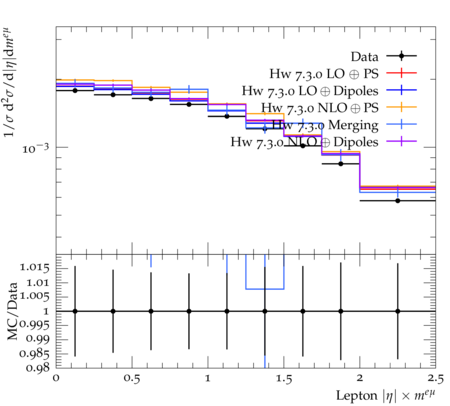ATLAS_2019_I1759875
The inclusive top quark pair (tˉt) production cross-section σtˉt has been measured in proton-proton collisions at √s=13 TeV, using 36.1 fb−1 of data collected in 2015-2016 by the ATLAS experiment at the LHC. Using events with an opposite-charge eμ pair and b-tagged jets, the cross-section is measured to be: σtˉt=826.4±3.6 (stat) ±11.5 (syst) ±15.7 (lumi) ±1.9 (beam) pb, where the uncertainties reflect the limited size of the data sample, experimental and theoretical systematic effects, the integrated luminosity, and the LHC beam energy, giving a total uncertainty of 2.4%. The result is consistent with theoretical QCD calculations at next-to-next-to-leading order. It is used to determine the top quark pole mass via the dependence of the predicted cross-section on mpolet, giving mpolet=173.1+2.0−2.1 GeV. It is also combined with measurements at √s=7 TeV and √s=8 TeV to derive ratios and double ratios of tˉt and Z cross-sections at different energies. The same event sample is used to measure absolute and normalised differential cross-sections as functions of single-lepton and dilepton kinematic variables, and the results are compared with predictions from various Monte Carlo event generators.







































